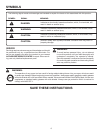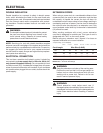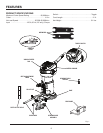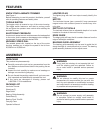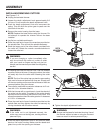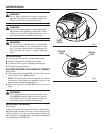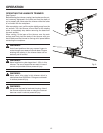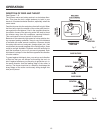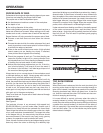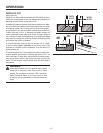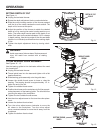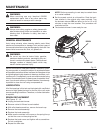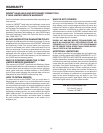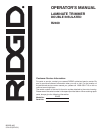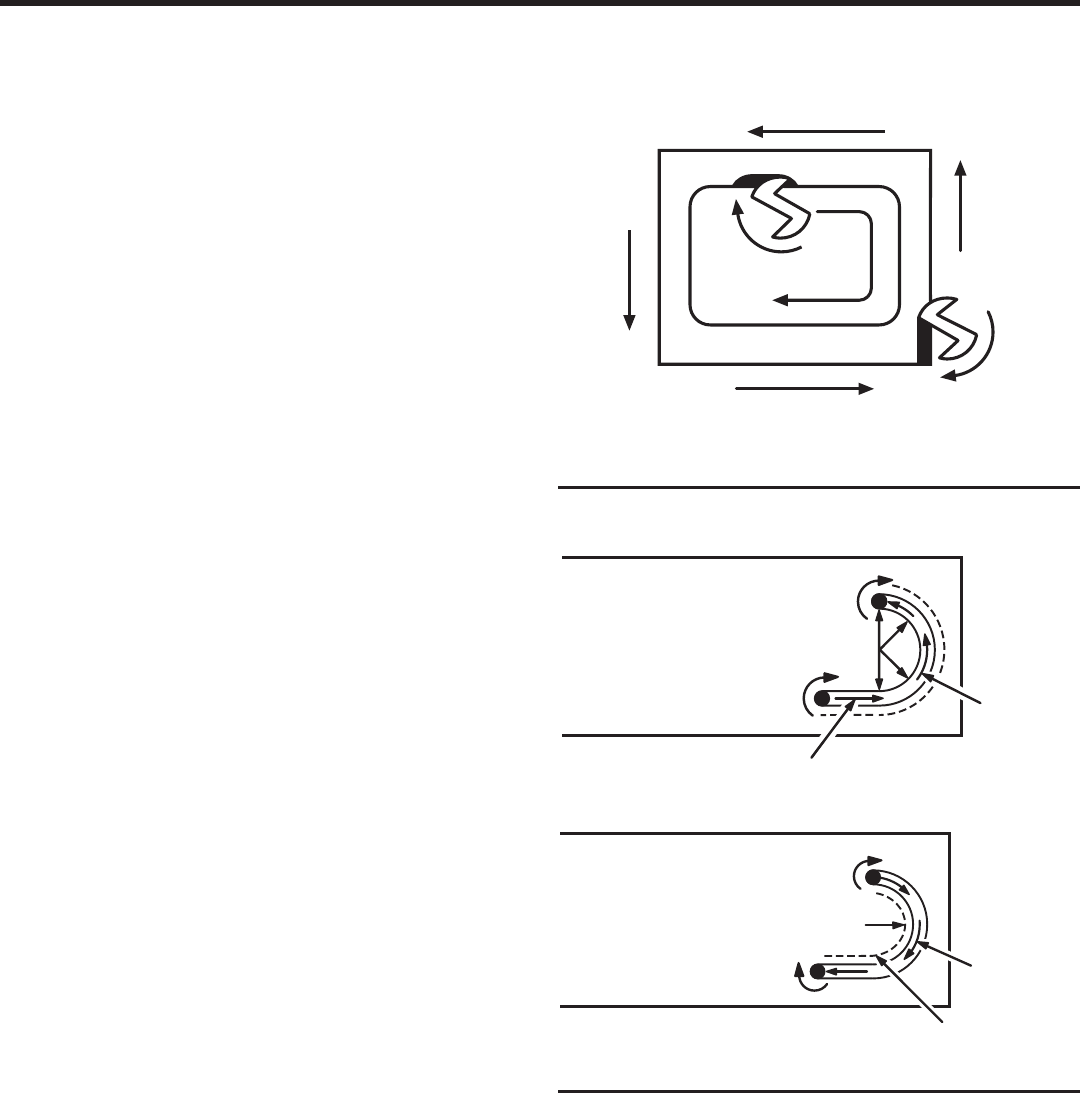
13
Fig. 8
Fig. 7
TRIMMER FEED
DIRECTION
BIT
ROTATION
TRIMMER FEED
DIRECTION
TRIMMER FEED
DIRECTION
TRIM END
GRAINS FIRST
BIT
ROTATION
THRUST
FEED
GUIDE
FEED
GUIDE INSIDE
GUIDE OUTSIDE
THRUST
GUIDE
ROTATION
ROTATION
OPERATION
DIRECTION OF FEED AND THRUST
See Figures 7 - 8.
The trimmer motor and cutter revolve in a clockwise direc-
tion. This gives the tool a slight tendency to twist in your
hands in a counterclockwise direction, especially when the
motor starts.
Feed the trimmer into the workpiece from left to right. When
fed from left to right, the rotation of the cutter pulls the trim-
mer against the workpiece. If fed in the opposite direction,
the rotation forces of the spinning cutter will tend to throw
the trimmer away from the workpiece, causing kickback.
This could result in loss of control of the trimmer.
Because of the extremely high speed of cutter rotation dur-
ing a proper feeding operation, there is very little kickback
to contend with under normal conditions. However, should
the cutter strike a knot, hard grain, foreign object, etc., that
would affect the normal progress of the cutting action, there
could be a slight kickback. Kickback could be sufficient to
spoil the trueness of your cut if you are not prepared. Such
a kickback is always in the direction opposite the direction
of cutter rotation.
To guard against kickback, plan your set-up and direction
of feed so that you will always be thrusting the tool—to
hold it against whatever you are using to guide the cut—in
the same direction that the leading edge of the cutter is
moving. The thrust should be in a direction that keeps the
sharp edges of the cutter continuously biting straight into
new (uncut) wood.




